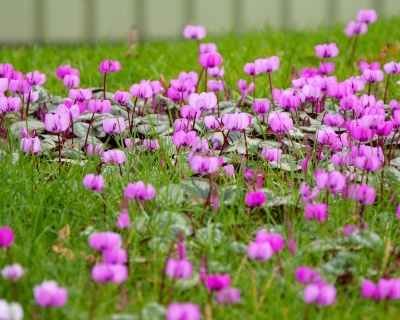Fearless flowers: Cyclamen coum
This cyclamen is cute, small and dainty but it’s also tough and can have a fantastic impact in the winter garden, says plantsman Graham Rice
Sparkling in winter and associating beautifully with hellebores and snowdrops, the dainty but robust flowers of Cyclamen coum come in a wonderful range of colours. They range from deep magenta-pink, through softer pinks to pure white and with some irresistible bicolours. What’s more, this is a genuinely hardy and reliable plant that will increase in number year on year.
The leathery, kidney-shaped foliage also varies enormously from deep lustrous green to completely silver with many pretty patterns in between, such as Pewter Group. There’s a huge variety of flower and foliage combinations.
Plants for free
Over time, Cyclamen coum will self sow, making delightful carpets of leaves and flowers. Generally the individual flowers don’t self-pollinate as the pollen in each flower ripens well before the stigma is receptive. Bees are the most common pollinators. For faster results, it’s best to start with at least two plants to create the best opportunity for successful


